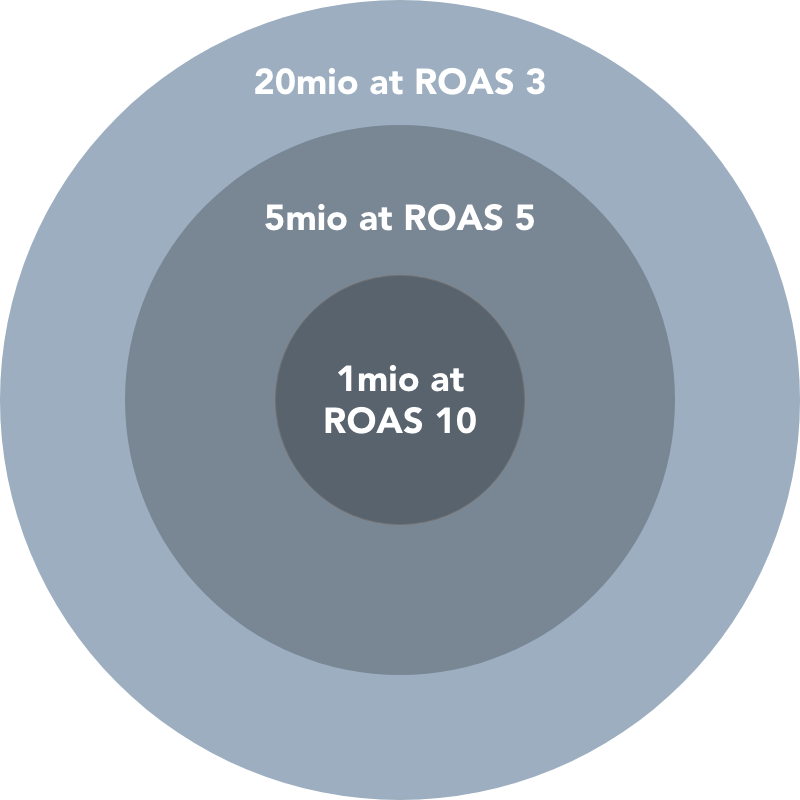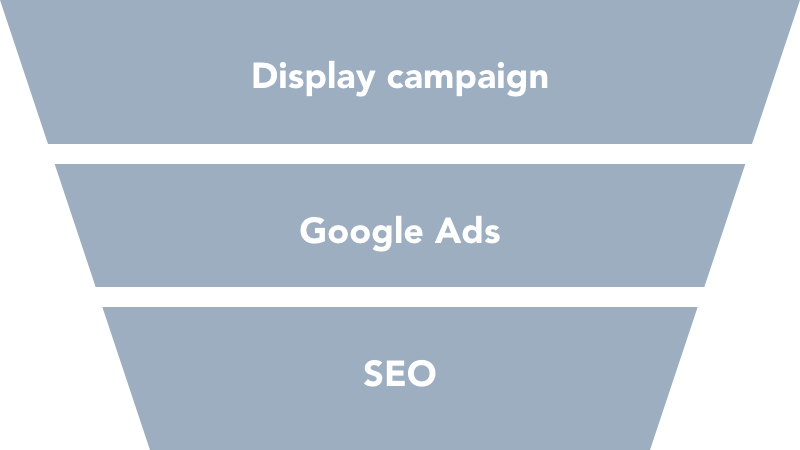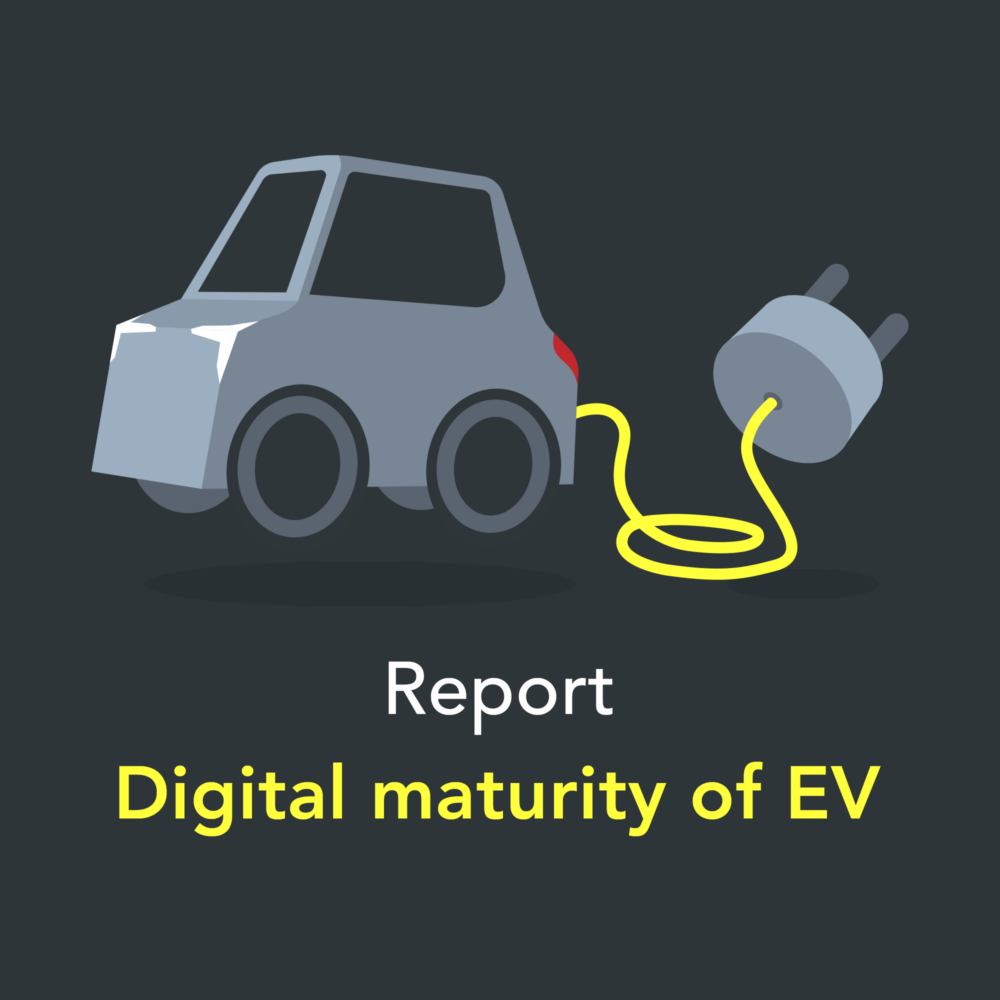Paid digital advertising is all about focussing on the right key performance indicators (KPI’s). Of course, every euro invested needs to generate revenue. Return On Ad Spend (ROAS) and target Cost Per Action (CPA) are amongst the most popular KPI’s that determine success in an e-commerce environment. In this article, we will be taking a closer look at what lies beneath the ROAS and CPA, what they are most suited for, and when to use which.
ROAS
ROAS, or ‘Return On Advertising Spent’, is used to evaluate the effectiveness of a marketing campaign. During this campaign, the ROAS offers a direct indication of the effectiveness of each euro spent. Using a target ROAS is most commonly used and works best for e-commerce campaigns that focus on revenue and have a high volume in sales.

The ROAS is either a fixed number or a percentage calculated by dividing the revenue from marketing by costs spent on advertising. For example, if a campaign accounts for €10.000 revenue and the advertising costs are €2000, your ROAS will be 500%. This means that every euro spent will gain you five euros. A ROAS can be calculated for individual campaigns, advertisement group and even for specific stand alone keywords to measure their direct effectiveness.
A proper ratio of the ROAS is different for each company. Even within the same company, different categories, such as products, can have different ROAS targets.
Setting the right target ROAS
Setting a ROAS target can be derived directly from a business goal. Depending on certain variables, like the margin of your products, the channels that are available, and the volume that is available within the market, you can fill in the pieces and create your campaign. A possible danger of setting the tROAS too high is that you will focus purely on efficiency and thus limit yourself in market share. We have illustrated an example below. Imagine aiming for a tROAS of 7. When achieving this, you will absolutely gain the 1 million euro in revenue from the inner circle. But in order to not go below the tROAS of 7 you can only gain a very small portion of the revenue that is available in the middle and outer ring.

Pros:
- Has a direct relation to the actual business goals
- When very little data is available a target ROAS is a good KPI to focus on
Cons:
- Can largely limit the total amount of revenue that your campaign can generate when the tROAS is set too high
- Can be risky if tracking and attribution are not correctly in place
Different in each step of the funnel
Naturally, the ROAS will vary per channel and step in the funnel. In the example below, we illustrate a classic sequence of steps for a customer and an online shop.

First, the potential customers are being targeted by a display campaign with an awareness target.
Secondly, the potential buyers start researching the products and click on an ad in the Google search results.
After the so-called ‘consideration fase’ they end up combining the name of the product and the name of your specific brand and converting via an organic click.
This example stresses the importance of tracking the users in each step of the funnel combined with an attribution model that will appoint value to each step. The fact that the user touches various channels within the funnel increases the importance of measuring the different channels combined rather than treating them as separate entities.
The variety in paths among users varies greatly therefore the importance of measuring the combined channels increases.
Cost Per Action
Cost Per Action, most commonly referred to as CPA, is a pricing model which looks at the total costs per specific action. CPA is often also referred to as Cost per Acquisition or CPL, which stands for Cost per Lead. Using CPA as a pricing model is often useful when there is no direct revenue to be gained for a business or when there are multiple goals that are valuable. For example, CPA would be a suitable model if selling subscriptions or gaining first time buyers is the goal. With both goals, the average lifetime value of the user can be taken into account to validate the maximum price you are willing to pay per conversion.

The CPA can be calculated by dividing the cost by the number of actions measured. For example, if a campaign spends €5000 and generates 250 conversions, the CPA is €20. When calculating the target CPA, you take into account the minimal required costs to generate profit and combine this with the average customer lifetime value.
Pros:
- The CPA is an easy to grasp number and can be distributed easily when working with different parties, such as affiliates
- Works for detailed segmentation. For example: different subscriptions or customer segments
- Suitable for working with different levels. A higher number of conversions will often allow a higher CPA
- Can generally still work well with a lower number of conversions when compared to target ROAS
Cons:
- Can be a problem when there is a high fluctuation in the net value per conversion
- Does not reflect sales performance as well as ROAS since the actual gain per sale is neglected
A laptop vendor and a target ROAS
The ROAS is a good KPI to use in high volume ecommerce campaigns. In this example, we will look at how an online laptop vendor can use the tROAS model. The cost of the product varies and each product has a separate conversion value. If a CPA is used in this case, it will not give a direct view on the revenue and effectiveness of the campaign. Let’s say an advertising campaign for gaming laptops is running and the laptops cost around €2000. The advertising costs are around €2500 and the total revenue is €30.000. Your ROAS will be (30000/2500) x 100 = 1200%. You will be making 12 euros for each euro spent.
Food delivery service and a target CPA
Food delivery services (e.g. Deliveroo, Uber Eats) are becoming increasingly larger in numbers. A typical business model for these companies is a fixed fee per delivery that is ordered through their service. Let’s say that this compensation per order is €1. A ROAS model would not be very suitable here since there is a fixed fee in place and the delivery service is likely to make a distinction between new and existing customers. The service estimates that every new buyer will return ten times within one year on average. With campaign targeting, you can exclude customers that have recently purchased and set a target CPA that is below €10. This will result in a profitable campaign.
Conclusion
The ROAS and CPA are both valuable KPI’s to use in your campaign. Which one you should use depends on the type of business, business objectives, campaign goals, channel and various other factors. Regardless of which type of model you choose for measuring the success of your campaign it is important to always take into account various KPI’s and not focus solely on either ROAS or CPA.
Would you like to know how we can help you with getting the best results from your paid channels? Contact our Paid media consultant Owen Browne: owen.browne@newcraft.nl

